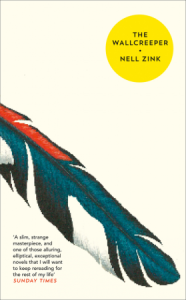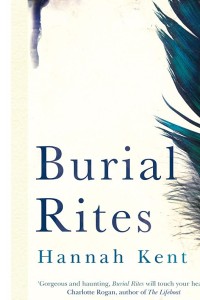Nell Zink, “The Wallcreeper”
 Nell Zink’s debut novel, The Wallcreeper, was published in 2014. (It has recently been followed by Mislaid.) The Wallcreeper is a slim novel, about Tiffany and Stephen who met when they were colleagues at a pharmaceutical firm in Philadelphia USA. They married within few weeks and relocated to Berlin, Germany. Tiffany learns, “I wasn’t a feminist. Even men in their seventies…would raise their eyebrows when I said I had followed my husband from Philadelphia to Berne and then to Berlin. I couldn’t come up with a step I’d taken in life for my own sake.” The Wallcreeper is also about birding, open marriage, environmental activism and later, environmental sabotage too.
Nell Zink’s debut novel, The Wallcreeper, was published in 2014. (It has recently been followed by Mislaid.) The Wallcreeper is a slim novel, about Tiffany and Stephen who met when they were colleagues at a pharmaceutical firm in Philadelphia USA. They married within few weeks and relocated to Berlin, Germany. Tiffany learns, “I wasn’t a feminist. Even men in their seventies…would raise their eyebrows when I said I had followed my husband from Philadelphia to Berne and then to Berlin. I couldn’t come up with a step I’d taken in life for my own sake.” The Wallcreeper is also about birding, open marriage, environmental activism and later, environmental sabotage too.
From the opening line of the novel you are hooked to the story. “I was looking at the map when Stephen swerved, hit the rock, and occasioned the marriage.” The novel continues in the same calm, confident, feisty and forthright tone. The former bricklayer and secretary, fifty-year-old Nell Zink was published for the first time last year at the insistence of Jonathan Franzen. She had written a fanzine to him a few years ago. Upon reading her prose that she began sending him regularly, he persuaded her to stop writing for an audience of one and consider a larger readership. Her debut novel, The Wallcreeper, had already been accepted by a small press called Dorothy that specialises in women’s writing. So Nell Zink’s second novel, Mislaid, was represented by Franzen’s agent and got Zink a six-figure advance. Both the novels have received a resounding reception in USA and are soon to be available in India too.
When you write for an audience of one, it is inevitable that the writing is imbued with a rawness and a sense of intimacy that is refreshingly confident. It a no-holds-barred style of writing. Surprisingly Nell Zink’s novels are churned out rapidly in a period of three weeks. They are well structured, with no flabbiness to the prose and bring in pithy observations on issues such as science, ethics, environment, feminism, freedom, the institution of marriage etc. On marriage, Nell Zink writes, “Marriage isn’t a sacrament. It’s just a bunch of forms to fill out. It either works or it doesn’t. Do what you want.” She is an eclectic and voracious reader judging by the literary references sprinkled throughout the novel. Otherwise how else do you account for a casual reference made yoking together Stanislaw Lem and The World of Apu in one paragraph? ( The World of Apu is a 1959 Bengali film drama made by noted filmmaker Satyajit Ray. It was based on the 1932 Bengali novel, Aparajito, by Bibhutibhushan Bandopadhyay.) She writes as people would speak when sure that their statements are being made in confidence. The one-liners that are embedded throughout her story come across as off-the-cuff perceptive comments that seem to have been carried over from the spoken word onto paper and fixed. This probably occurs due to the speed at which she thinks and writes prose. It is an incredible form of writing.
The cover design for the book is stupendous showing a wallcreeper feather. Yet I cannot help but think the design is  very similar to another fantastic debut novel, Burial Rites by Hannah Kent.
very similar to another fantastic debut novel, Burial Rites by Hannah Kent.
This profile of Nell Zink in the New Yorker by Kathryn Schulz published on 18 May 2015 is fabulous. http://www.newyorker.com/magazine/2015/05/18/outside-in . Some other links worth reading are:
Robin Romm, review of The Wallcreeper, NYT, 17 Oct 2014 http://www.nytimes.com/2014/10/19/books/review/nell-zink-wallcreeper-review.html?_r=0
From the Guardian, January 2015: http://www.theguardian.com/books/2015/jan/04/nell-zink-jonathan-franzen-clear-distinction-taking-career-seriously-writing-seriously
The Paris Review, December 2014: http://www.theparisreview.org/blog/2014/12/08/purity-of-essence-one-question-for-nell-zink/
An interview in Vice, June 2015: http://www.vice.com/read/nell-zink-is-damn-free-585
A profile in The Literary Hub, May 2015: http://lithub.com/the-mislaid-plans-of-nell-zink/
I cannot recommend this book enough. It is not necessarily only for the story, but the style too.
Nell Zink The Wallcreeper Fourth Estate, an imprint of HarperCollins Publishers, London, 2014. Hb. pp.168
4 September 2015


